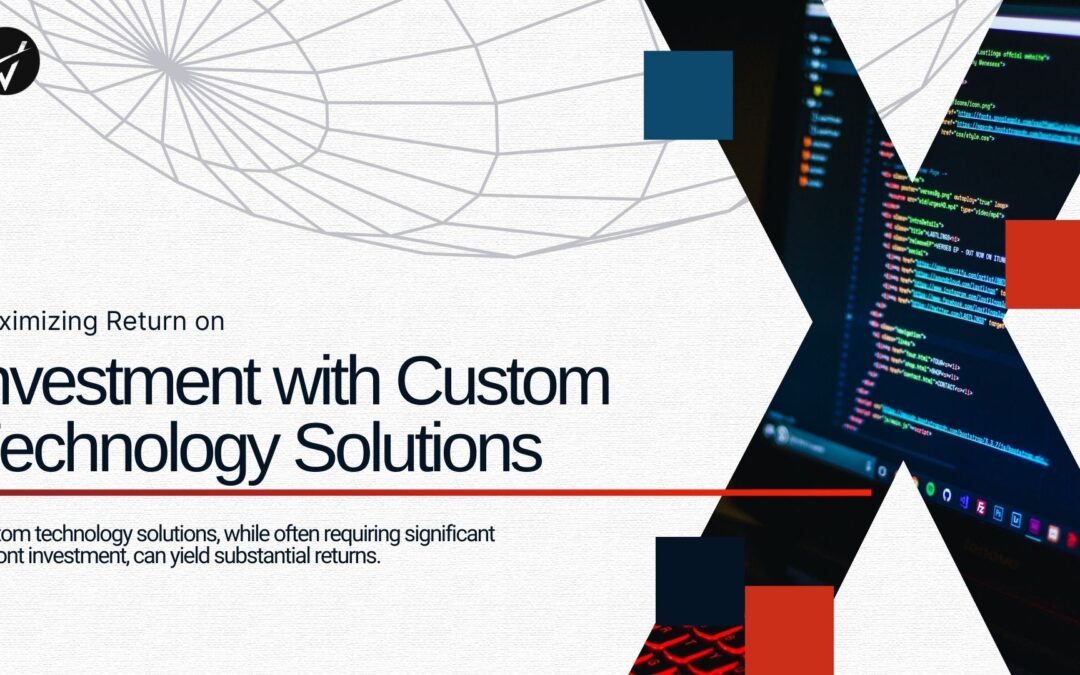In the realm of business, investing in technology is not just about staying current; it’s about driving efficiency, enhancing customer experiences, and ultimately, boosting profitability. Custom technology solutions, while often requiring significant upfront investment, can yield substantial returns. Here’s how businesses can expect to see a return on investment (ROI) in areas such as software, mobile applications, artificial intelligence (AI), trackers, integrations, automation, websites, portals, databases, and business intelligence.
Software Development
Custom software can streamline operations, reduce errors, and save time, directly impacting the bottom line. For example, a custom CRM system can improve sales cycles and customer retention, potentially increasing sales by 10-30%. The automation of repetitive tasks frees up employees’ time for higher-value work, further enhancing productivity and reducing costs.
Mobile Applications
Mobile apps can open new revenue channels and improve service delivery. For companies in sectors like retail or services, a well-designed app can enhance the customer experience, leading to increased customer loyalty and higher conversion rates. Mobile workforce applications can improve field service operations, increasing efficiency by 20-40% by reducing travel time and improving job ticket management.
Artificial Intelligence
AI can transform operations through predictive analytics and machine learning. For instance, in manufacturing, AI-driven predictive maintenance can reduce downtime by up to 50% and increase production by 20%. In retail, AI can personalize shopping experiences, boosting sales by understanding consumer behavior patterns.
Trackers
Implementing tracking solutions in logistics can optimize routes and reduce fuel consumption, potentially saving up to 20% in operating costs. Additionally, real-time tracking of assets can reduce theft and loss, providing further financial benefits.
Integrations
By integrating disparate systems, businesses can avoid the costs of manual data entry and errors associated with it. Integrations also provide a unified view of business operations, improving decision-making and operational efficiency, which can result in cost savings of 15-30%.
Automation
Automation technology can dramatically reduce labor costs and increase process efficiency. For example, automated invoicing and payment processing can reduce transaction costs by 70-80% and improve cash flow management.
Websites
A robust, well-designed website can significantly increase a company’s visibility and attract more customers. E-commerce functionality can expand market reach and increase sales volumes, with ROI often seen as a 100-200% increase in online sales within the first year.
Portals
Customer and employee portals enhance engagement and satisfaction. They provide users with easy access to necessary information, reducing operational costs by decreasing the workload on customer service teams by as much as 20-30%.
Database-Driven Information
Custom databases improve data access, accuracy, and security. For businesses that rely on large volumes of data, such as those in finance or healthcare, this can lead to better compliance, fewer errors, and faster decision-making, translating into an ROI of 30-50% through improved operational efficiency.
Business Intelligence
BI tools can transform raw data into actionable insights, leading to better business decisions and increased competitive advantage. For instance, BI can optimize pricing strategies and inventory management, potentially increasing margins by 5-10% and reducing inventory costs by up to 25%.
Conclusion
Investing in custom technology solutions can offer significant returns, but it requires careful planning and execution. The key to maximizing ROI is not just in selecting the right technology, but also in tailoring it to meet the specific needs of the business, ensuring it integrates smoothly with existing operations, and training staff to leverage it fully. As businesses continue to navigate a technology-driven world, those that can effectively harness the power of custom solutions will find themselves ahead, both in efficiency and profitability.

